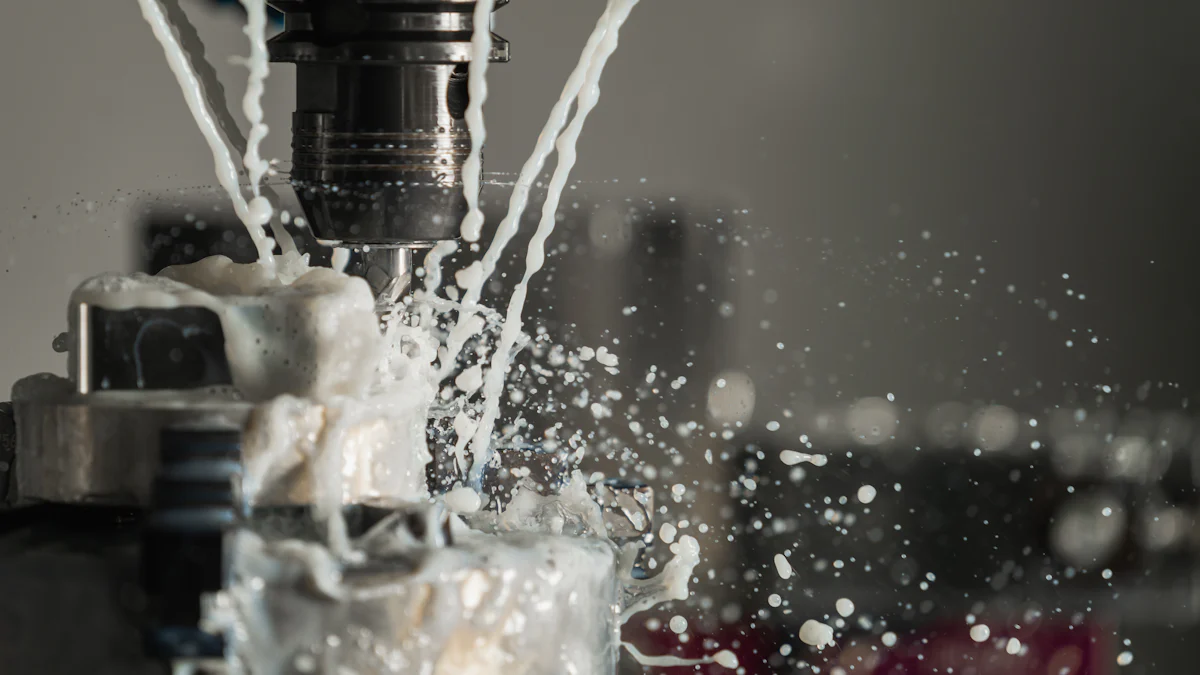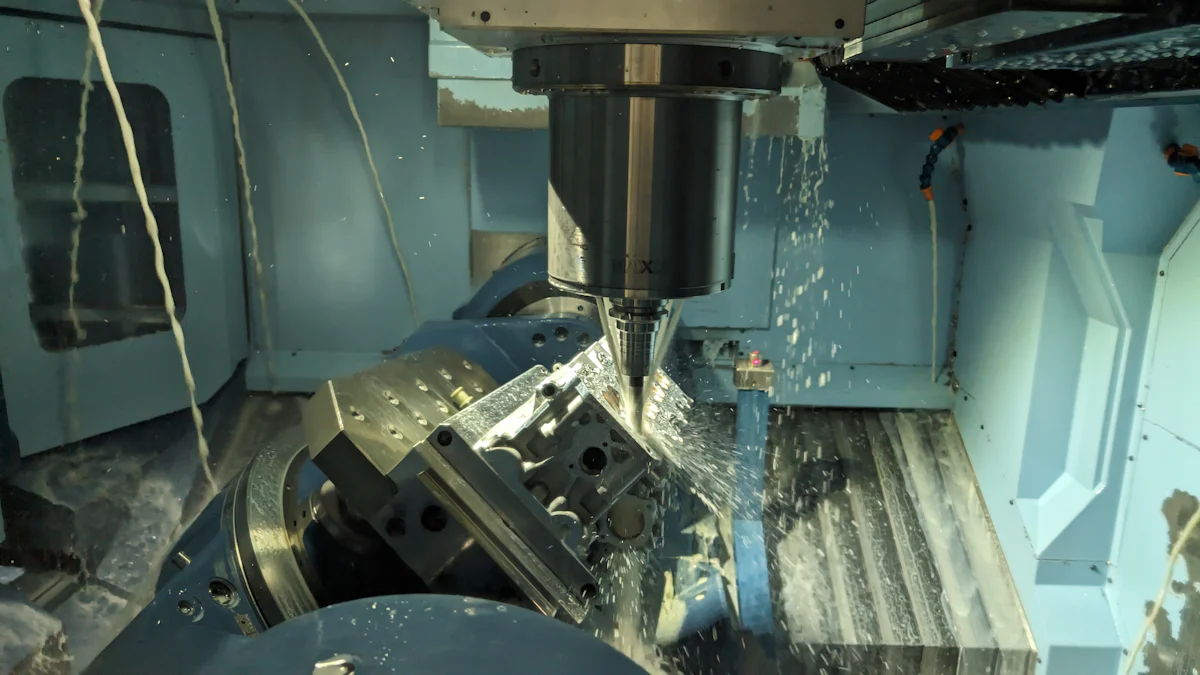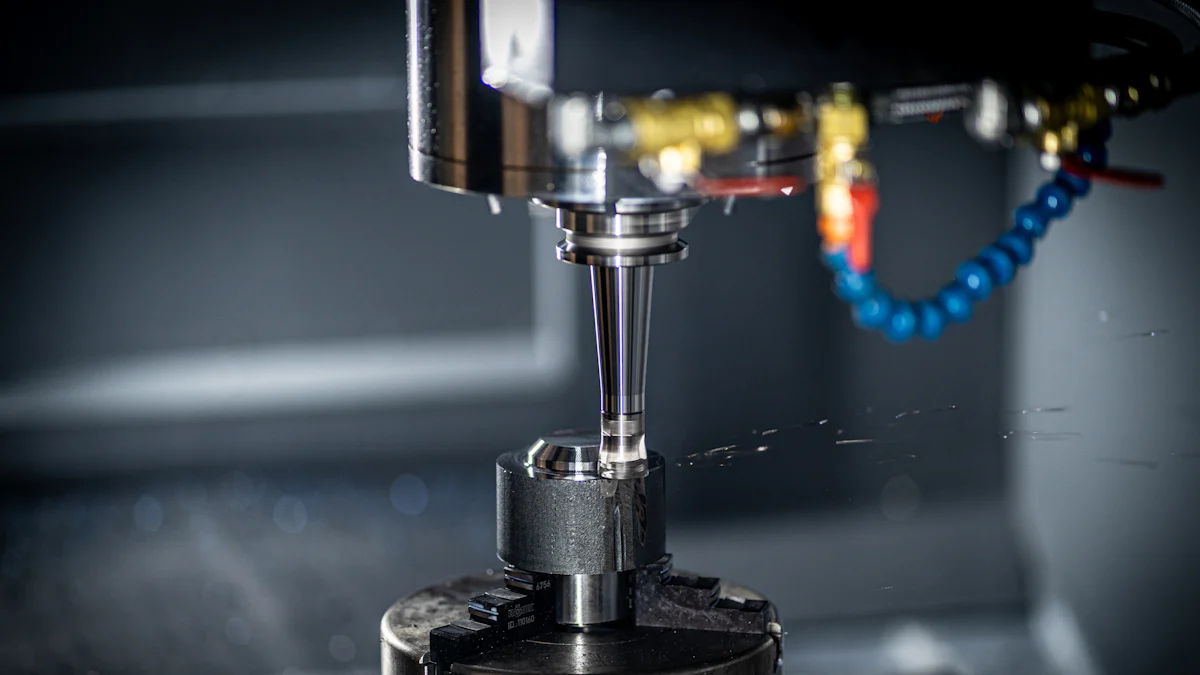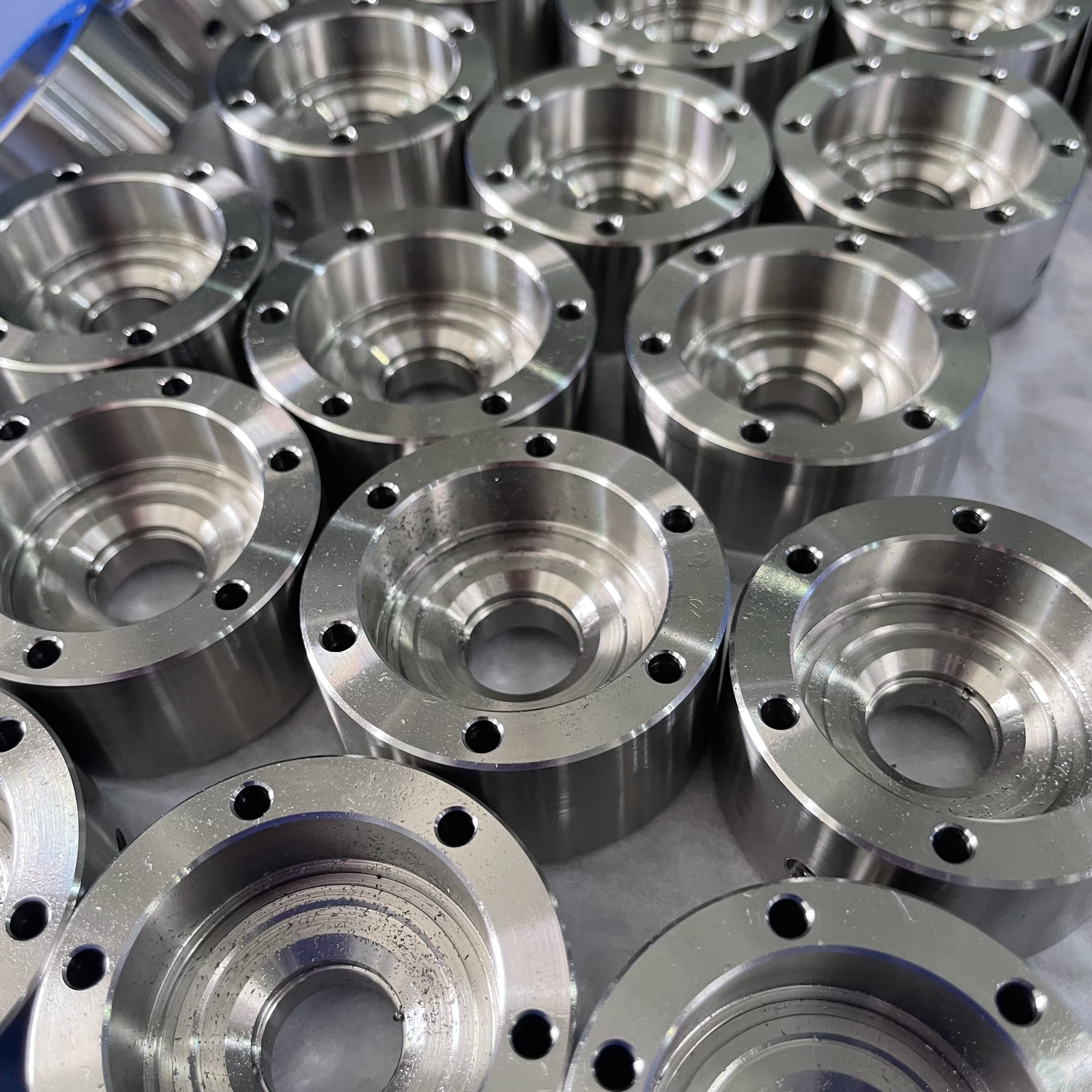How CNC Machining Reduces Material Waste in Manufacturing

CNC machining transforms manufacturing by helping you reduce material waste through precision and automation. This process uses advanced programming to cut materials with unmatched accuracy, ensuring minimal scrap. Unlike traditional methods, CNC machining maximizes raw material use and minimizes errors, making it a cornerstone of sustainable manufacturing.
You can adopt waste-reducing practices like recycling scrap and optimizing designs to further enhance efficiency. These strategies not only lower production costs but also support eco-friendly practices. By implementing efficient CNC machining, you contribute to sustainable manufacturing while improving resource utilization and reducing waste.
CNC machining’s precision and efficiency make it a vital tool for advanced manufacturing. Its ability to reduce material waste aligns with modern sustainability goals, ensuring a greener future for manufacturing.
Key Takeaways
CNC machines use computers to make exact cuts, reducing waste.
Better designs and correct programming help use materials wisely.
Recycling scraps saves money and supports a reuse-friendly economy.
Faster cutting and better tool paths make less extra waste.
Using CNC machines helps the planet and brings green customers.
The Role of CNC Machining in Reducing Waste

How CNC Machining Works
CNC machining operates by using computer-controlled tools to cut, shape, and finish materials with precision. It integrates CAD (Computer-Aided Design) and CAM (Computer-Aided Manufacturing) software to simulate and optimize the machining process before production begins. This approach ensures that you can visualize the final product and make adjustments to reduce material waste. By selecting appropriate materials during the design stage, you can further minimize excess waste.
Sustainable practices in CNC machining also play a significant role. For example, closed-loop systems collect and reuse scrap materials, promoting a circular economy. These systems not only reduce waste but also conserve resources, making CNC machining a key player in sustainable manufacturing.
Precision and Automation in Waste Reduction
CNC machining excels in reducing waste through its precision and automation. Accurate programming eliminates human errors, ensuring that each cut and shape meets exact specifications. Advanced software optimizes tool paths, maximizing material usage and minimizing scrap. Real-time monitoring with sensors allows you to adjust machining parameters, further reducing waste.
Automation enhances efficiency by enabling continuous operation. CNC machines can run unattended for long periods, reducing downtime and increasing productivity. Their ability to execute multiple operations simultaneously saves time and ensures consistent quality. This precision reduces the need for rework, which often generates additional material waste in traditional manufacturing.
Comparison with Traditional Manufacturing Methods
Traditional manufacturing methods often generate higher levels of material waste due to inefficiencies in material removal and overproduction. Manual labor in these methods increases the likelihood of errors, leading to more scrap. In contrast, CNC machining uses automated software to achieve precise cuts, significantly reducing waste.
Traditional methods also consume more raw materials, contributing to resource depletion. The subtractive nature of these processes results in considerable waste. CNC machining, however, optimizes material usage and ensures that only the necessary amount of material is removed. This efficiency not only reduces waste but also supports sustainable manufacturing practices.
Strategies for Reducing Waste in CNC Machining
Accurate Programming and Design Optimization
Accurate programming plays a critical role in reducing waste during CNC machining. By using advanced CAD and CAM software, you can create designs that minimize material waste. These tools allow you to simulate the machining process, helping you identify potential issues before production begins. This ensures that every cut and operation is optimized for efficiency.
Design optimization enhances machining efficiency further. For example:
You can use Design for Manufacturability (DFM) principles to create designs that consider material availability and recyclability.
Optimizing part orientation during the design stage reduces setups and material waste.
Advanced software tools help you visualize the machining process, ensuring fewer errors and better resource utilization.
By focusing on accurate programming and design optimization, you can achieve optimal material utilization and reduce unnecessary waste.
Material Nesting for Maximum Resource Utilization
Material nesting is another effective waste reduction strategy in CNC machining. This process involves arranging parts on raw material in a way that minimizes scrap. Dynamic nesting software can help you optimize the layout of parts, ensuring maximum use of available material.
Best practices for material nesting include:
Using grain constraints to align parts correctly for forming and aesthetics.
Filling sheets with parts to minimize scrap and manage remnants effectively.
Employing scenario nesting to analyze and optimize material use across different stock sizes.
Considering edge quality and process stability when using common-line cutting techniques.
By tracking metrics like production time and material costs, you can evaluate the effectiveness of your nesting strategies. This approach ensures optimal material utilization and supports sustainable manufacturing practices.
Recycling and Reusing Scrap Materials
Recycling and reusing scrap materials are essential waste reduction strategies in CNC machining. Metal chips or swarf produced during machining can be recycled, reducing the need for new raw materials. You can also reuse material waste for prototypes, test pieces, or fixtures, giving it a second life.
Many manufacturers sell or donate scrap materials to recyclers or other businesses. This not only reduces waste but also contributes to a circular economy. By incorporating recycling into your processes, you can lower costs and support sustainable practices.
These strategies ensure that even leftover materials are put to good use, aligning with modern waste reduction strategies and sustainability goals.
Optimizing Cutting Speed and Toolpaths
Optimizing cutting speed and toolpaths plays a crucial role in reducing material waste during CNC machining. By fine-tuning these parameters, you can achieve efficient material removal while minimizing unnecessary scrap. This approach not only improves resource utilization but also enhances the overall machining process.
Several strategies help you optimize cutting speed and toolpaths effectively:
Adaptive cutting uses real-time feedback to adjust the cutting tool, ensuring the path is optimized to reduce waste.
Smaller cut widths lower material usage and allow cutting tools to cool faster, extending their lifespan.
Choosing the right cutting path strategy, such as contour, spiral, or zigzag patterns, ensures efficient material removal based on the material type.
You can also follow specific steps to enhance toolpath optimization:
Reduce non-cutting movements to minimize the time the tool spends moving without cutting.
Use different tool paths for roughing and finishing to optimize material removal at each stage.
Apply adaptive tool paths that adjust in real-time to varying material conditions, ensuring efficient cutting.
These techniques not only reduce waste but also improve machining precision. For example, adaptive tool paths respond to material inconsistencies, preventing overcutting or undercutting. This ensures that only the necessary material is removed, leaving minimal scrap behind.
By focusing on cutting speed and toolpath optimization, you can achieve better results in CNC machining. These adjustments save resources, reduce costs, and support sustainable manufacturing practices.
Environmental and Cost Benefits of CNC Machining

Lower Material Costs Through Efficient Resource Use
CNC machining helps you achieve significant cost savings by reducing material waste. Optimized programming and precise cutting ensure that you use only the necessary amount of raw materials. This approach minimizes excess waste and lowers material costs. By selecting energy-efficient machines, you can further reduce operational expenses.
You can also benefit from better resource utilization. Advanced software allows you to choose materials that align with your production needs. This ensures that every piece of material contributes to the final product, reducing waste and improving cost efficiency. Sustainable production processes, such as recycling scrap materials, further enhance your ability to produce responsibly while saving money.
Reduced Carbon Footprint in Sustainable Manufacturing
CNC machining plays a vital role in sustainable manufacturing by reducing its environmental impact. Energy-efficient machines consume less power, which lowers emissions and decreases your carbon footprint. These machines also extend tool lifespan, reducing the need for frequent replacements and conserving resources.
You can adopt eco-friendly practices by using recycled metals or biodegradable plastics in your production. Closed-loop systems in CNC machining facilities recycle waste materials, promoting a circular economy. Some manufacturers even integrate renewable energy sources, like solar or wind power, to further reduce reliance on non-renewable energy. These strategies not only support sustainability but also help you produce responsibly.
Long-Term Benefits for Production Efficiency
CNC machining offers long-term advantages for production efficiency and sustainability. By reducing waste and optimizing resource use, you can lower raw material procurement costs. Energy-efficient technologies also cut energy consumption, leading to reduced operational expenses.
Sustainable practices enhance your brand reputation. Consumers increasingly prefer products from companies that prioritize environmental responsibility. By committing to sustainability, you can attract eco-conscious customers and build loyalty. Additionally, the use of recycled materials reduces the demand for raw resources, contributing to a healthier planet.
These benefits make CNC machining a powerful tool for improving production efficiency while supporting sustainable manufacturing goals.
Enhancing Manufacturing Efficiency with CNC Machining
Time Efficiency and Reduced Downtime
CNC machining significantly improves time efficiency in manufacturing. Once programmed, CNC machines operate autonomously, eliminating the need for constant supervision. This allows you to focus on other tasks while the machine completes its operations. Multi-axis CNC machines further enhance efficiency by performing multiple operations simultaneously. This capability reduces the time required for complex projects.
Reusable programs also streamline the setup process. You can save and reuse these programs for similar projects, minimizing adjustments and speeding up production. Faster project completion not only reduces downtime but also lowers production costs. Compared to traditional methods, CNC machining offers a faster and more efficient approach to manufacturing.
Consistency and Quality in Production
CNC machining ensures consistent quality across all production batches. Automated processes reduce human error, allowing you to produce identical parts with high precision. This consistency is essential for maintaining high standards in manufacturing.
Key factors that contribute to consistent quality include:
Fully automated systems that minimize defects.
The ability to produce identical parts repeatedly.
Data collection for continuous improvement in production processes.
Quality control in CNC machining prevents fluctuations in product standards. By maintaining uniformity, you can meet customer expectations and build trust in your products.
Supporting a Closed-Loop Manufacturing System
CNC machining supports closed-loop manufacturing systems by incorporating eco-friendly practices. These systems collect and reuse scrap materials, fostering a circular economy. By recycling waste materials, you can reduce costs and minimize material waste.
Feedback mechanisms in CNC machining play a crucial role in optimizing resource use. These systems monitor and adjust processes in real-time, ensuring minimal waste. You can also integrate recycled materials into production, further enhancing sustainability. Closed-loop systems not only reduce environmental impact but also improve manufacturing efficiency.
By adopting CNC machining, you can achieve greater efficiency, consistent quality, and sustainable manufacturing practices. These benefits make it an essential tool for modern production.
CNC machining has revolutionized manufacturing by reducing material waste and promoting sustainability. Its precision and automation ensure efficient resource utilization, minimizing scrap and conserving raw materials. Many manufacturers have successfully implemented CNC machining to reduce costs, improve environmental impact, and attract eco-conscious customers. For example:
Companies have reduced waste by using recycled materials and closed-loop systems.
Adaptive cutting techniques and laser cutting have optimized accuracy and minimized scrap.
Optimized CNC processes have enhanced efficiency and reduced downtime.
Adopting CNC machining also supports environmental goals. Energy-efficient machines lower emissions and conserve energy. Recycling strategies and eco-friendly materials, like biodegradable plastics, further reduce the carbon footprint. These practices preserve natural resources and decrease pollution, making CNC machining a cornerstone of sustainable manufacturing.
By embracing CNC machining, you can enhance production efficiency, reduce costs, and contribute to a greener future. Its transformative potential makes it an essential tool for modern manufacturing.
FAQ
What is CNC machining, and how does it reduce material waste?
CNC machining uses computer-controlled tools to cut and shape materials with precision. It reduces waste by optimizing material usage, minimizing errors, and recycling scrap. This process ensures efficient resource utilization and supports sustainable manufacturing practices.
Can CNC machining work with different materials?
Yes, CNC machining works with metals, plastics, wood, and composites. You can choose materials based on your project needs. Advanced programming ensures efficient cutting, regardless of the material type, reducing waste and improving production quality.
How does CNC machining compare to traditional methods?
CNC machining offers greater precision and automation than traditional methods. It minimizes human error, reduces material waste, and ensures consistent quality. Traditional methods often generate more scrap due to inefficiencies and manual processes.
Is CNC machining environmentally friendly?
Yes, CNC machining supports sustainability. It reduces waste, recycles scrap materials, and uses energy-efficient machines. You can also integrate eco-friendly materials and renewable energy sources to further lower the environmental impact.
What industries benefit most from CNC machining?
Industries like aerospace, automotive, healthcare, and electronics benefit greatly. CNC machining ensures high precision, consistent quality, and reduced waste, making it ideal for producing complex parts and prototypes in these sectors.
Tip: To maximize CNC machining benefits, focus on accurate programming, material selection, and recycling strategies. These practices enhance efficiency and sustainability.
See Also
Streamlined CNC Machining Solutions For Accurate Production
Grasping Material Needs For CNC Precision Machining
Recognizing The Significance Of CNC Precision Machining
About US
Follow Us
Your prototype holds unparalleled significance, and we deeply value its uniqueness. Collaborating with you during the preparation phase for running your prototype or parts is a commitment we gladly embrace. Whether it's a single part or a complex assembly, we are dedicated to selecting the optimal tools and pathways to bring your envisioned product to life.
At Precision Fab CNC Machining, we specialize in producing parts for prototypes, short runs, and high-volume production. Our prototyping machine capabilities extend across metal, plastic, and wood machining, with welding fabrication services available to complement and finalize your prototype if required.
Address
Address: Room320 10F, Building A,Nanshan international building, Dayawan District, Huizhou, Guangdong, 516001 China
Contacts
billy@timaycnc.com

